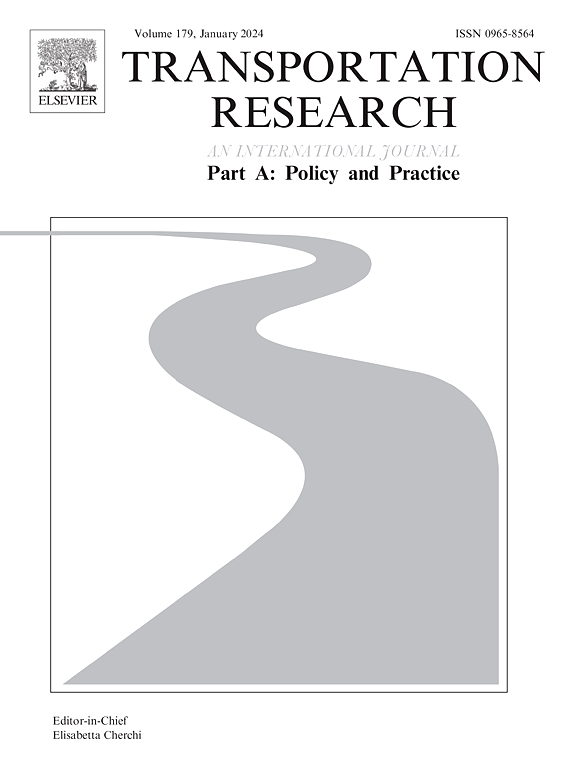An autoregressive spatial stochastic frontier analysis for quantifying the sales efficiency of the electric vehicle market: An application to 88 pilot cities in China
IF 6.3
1区 工程技术
Q1 ECONOMICS
Transportation Research Part A-Policy and Practice
Pub Date : 2025-01-31
DOI:10.1016/j.tra.2025.104388
引用次数: 0
Abstract
This paper proposes the use of an autoregressive spatial stochastic frontier model to measure the sales efficiency of the electric vehicle (EV) market in 88 Chinese cities for the period 2016 to 2023. In contrast to previous research on this topic, the adoption of a stochastic frontier model allows for computing the maximum level of EV sales (i.e., frontier) that each city could have potentially achieved in the timeframe under assessment given a certain set of inputs (e.g., central and local purchase subsidies, subsidies for the construction/operation of electric vehicle chargers, average petrol prices, purchase restrictions on conventional vehicles, among others). Further, the spatial-based structure of the model proposed enables the evaluation of the impact of similar policy interventions implemented in neighbouring cities on EV sales frontier estimated within the city. The empirical evidence suggests that as the provision of EV charging stations around and within the city increases, so does the maximum number of sellable electric cars. A further interesting finding is that the frontier for EV sales is positively influenced by the electric cars purchased in the previous month in neighbouring areas, revealing the presence of a strong spatial dependency. Finally, this study conducts a simulation exercise wherein three hypothetical scenarios are explored: (1) the implementation of a ten percent tax on petrol, (2) a ten percent increase in the number of public chargers available, and (3) the introduction of policies to improve the air quality of all 88 cities. The results from the simulation analysis suggests that improving the number of public charging stations by 10 percent would have resulted in the sales of nearly 41,000 EVs more across the 88 cities over eight years.
求助全文
约1分钟内获得全文
求助全文
来源期刊
CiteScore
13.20
自引率
7.80%
发文量
257
审稿时长
9.8 months
期刊介绍:
Transportation Research: Part A contains papers of general interest in all passenger and freight transportation modes: policy analysis, formulation and evaluation; planning; interaction with the political, socioeconomic and physical environment; design, management and evaluation of transportation systems. Topics are approached from any discipline or perspective: economics, engineering, sociology, psychology, etc. Case studies, survey and expository papers are included, as are articles which contribute to unification of the field, or to an understanding of the comparative aspects of different systems. Papers which assess the scope for technological innovation within a social or political framework are also published. The journal is international, and places equal emphasis on the problems of industrialized and non-industrialized regions.
Part A''s aims and scope are complementary to Transportation Research Part B: Methodological, Part C: Emerging Technologies and Part D: Transport and Environment. Part E: Logistics and Transportation Review. Part F: Traffic Psychology and Behaviour. The complete set forms the most cohesive and comprehensive reference of current research in transportation science.

 求助内容:
求助内容: 应助结果提醒方式:
应助结果提醒方式:


